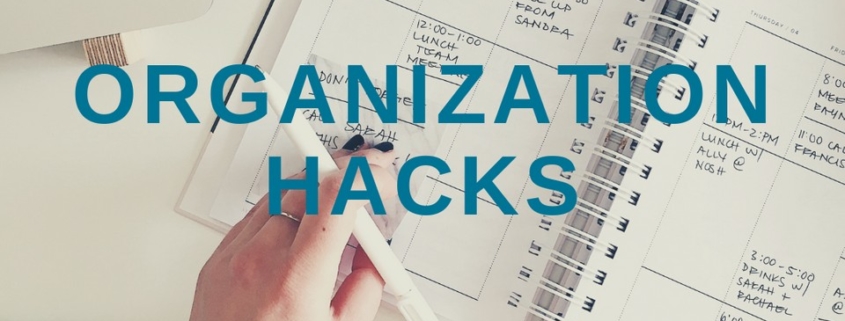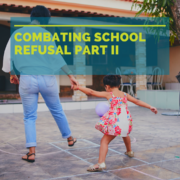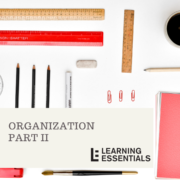LE’s Back-to-School Series: Organization Hacks
To say that back-to-school season is hectic would be an understatement—at times it can feel like downright madness. Students are excited, but anxious; teachers are enthused, but overwhelmed; and parents are relieved, yet frantic at the same time. Going back to school can leave everyone feeling a little (or a lot) stressed. However, like with many other challenges, PRIOR PLANNING PREVENTS POOR PERFORMANCE. With a little organization, these tips and tricks from Learning Essentials will help parents and students get back into the swing of things like never before!
- Create a back-to-school shopping list after browsing your child’s school website and any course information that might be posted online. You can also reach out to content-specific department heads, also listed on every school’s website, with specific questions about course needs and necessary materials. For instance, if you are unsure of the allowable calculator for an advanced algebra course, reach out to the school’s math content specialist. Of course, additional needs may pop up later, but it’s good to have an idea of the basic needs to get your child through the first week.
- Consider purchasing a label maker or using a Sharpie to add initials to personal items. Between new lockers, class changes, confusing schedules, and everyday chaos, newly purchased back-to-school swag tends to get lost—quickly. Adding initials or labels to items such as bookbags, lunch boxes, water bottles, jackets, pencil pouches, and coats will help to ensure that misplaced items have a better chance of being returned.
- Make a quick “to-do” reference sheet near the door so that children can begin the process of self-checking before and after school. For visual learners, use photos to represent the “must haves” before children run out the door in the morning. Depending on age and ability, reminders might include brushing teeth, making the bed, packing clothes for P.E., grabbing the lunch box, and putting the homework folder in the bookbag.
- If parents want children to take more initiative when getting home after school, use an after–school checklist with specific time frames so that kids know how long a typical task should take and at what time parents expect each task to be completed. To motivate kids who are new to an accountability process, consider incentivizing task completion.
- Photocopy your child’s course schedule and keep it somewhere handy around the house and/or at work. This allows parents to quickly refer to class times to find the least disruptive window when determining doctors appointments, early dismissals, etc.
- Do a “practice walk/ride” to and from school before the first day so that anxious children feel more comfortable about exactly how they’ll be getting to and from school. Make a point to talk about traffic patterns and crosswalks, especially for new bike riders or families that may have just moved into the community.
- For young bikers, consider getting a combination lock that uses letters instead of numbers. One word is often much easier for children to remember than typical numeric combinations.
- Designate a folder or file for any paperwork, permission slips, or forms that parents need to sign. This will avoid the last–minute chaos of trying to find the crumpled sheets in the bottom of a book bag during rush hour.
- Set up a whiteboard calendar in a highly-frequented area of the house to post major academic or extracurricular events and their times/locations. Consider color coding the calendar so that each family member’s itinerary is written in a specific color. Take a photo of the calendar and send a group text on Sunday so that everyone is aware of each person’s obligations and whereabouts.
Label a hanging cubby organizer with days of the week so that children can begin to plan their school outfits for the week in advance. There is nothing worse than running late and rummaging through the hamper in a fury to find a specific article of clothing. With a labeled cubby hanging in the closet, children can learn to plan ahead and build autonomy by sorting everything they need for each day’s outfit in advance—no more ransacking the drawers to find matching socks at the last minute!








